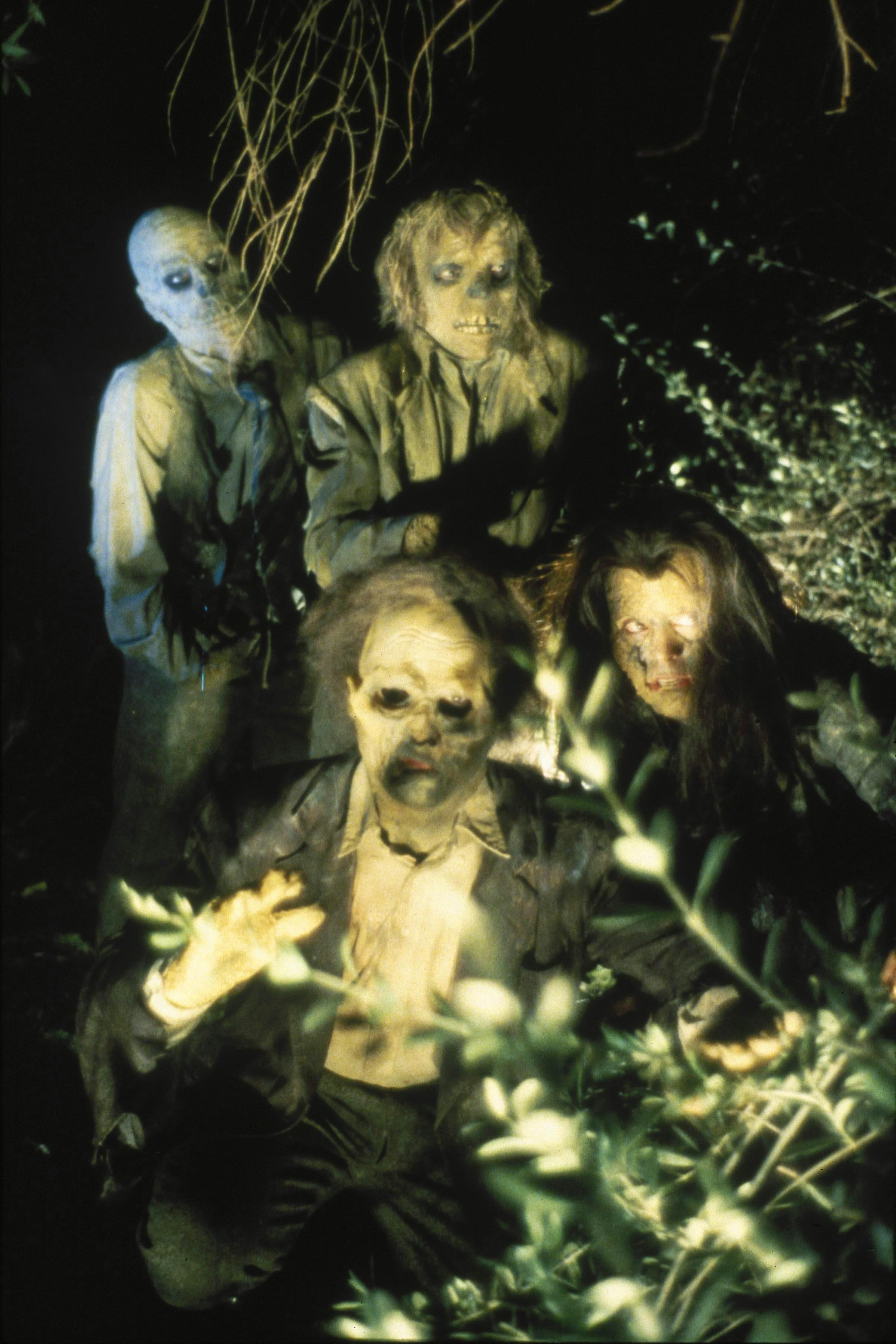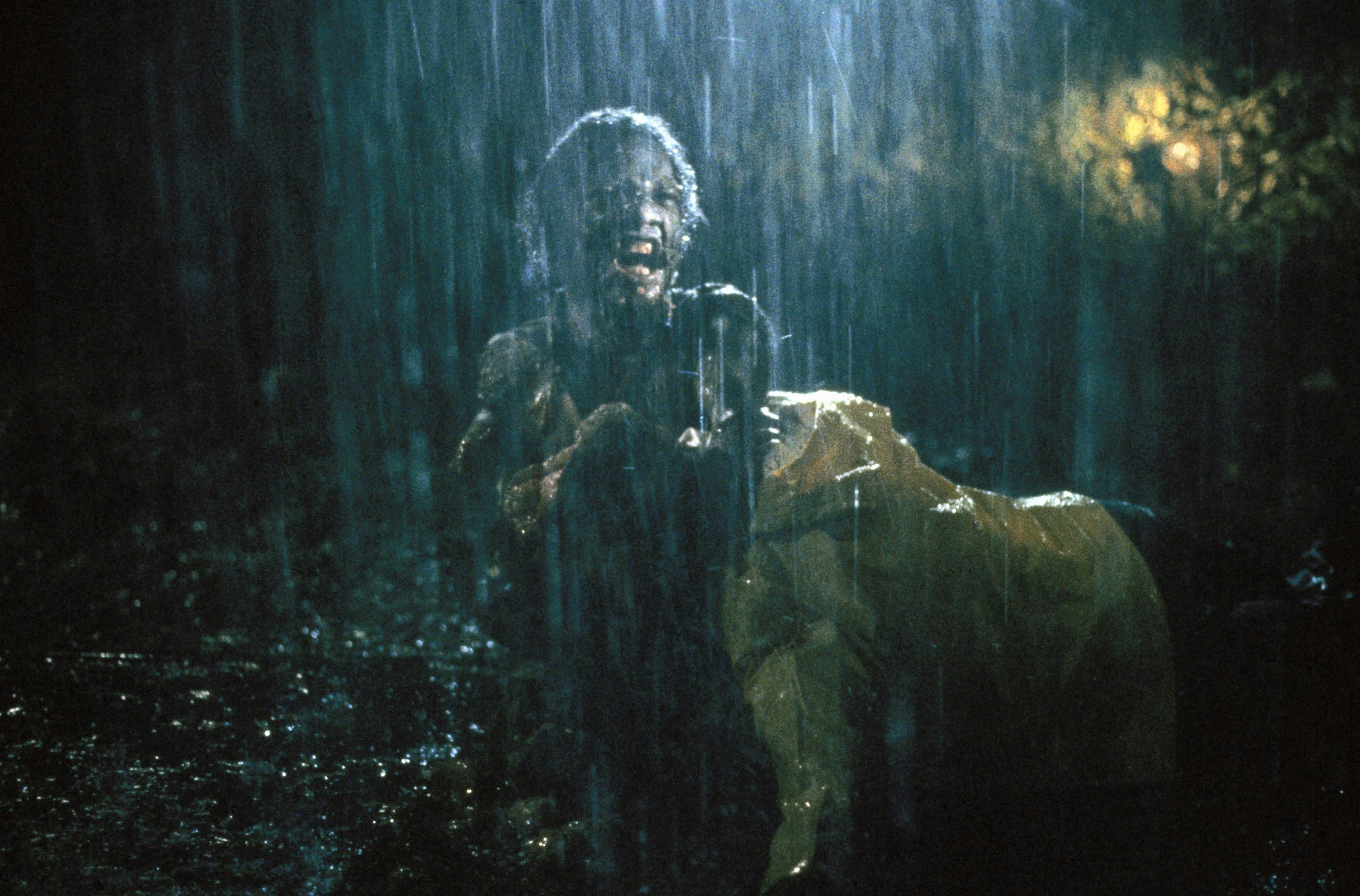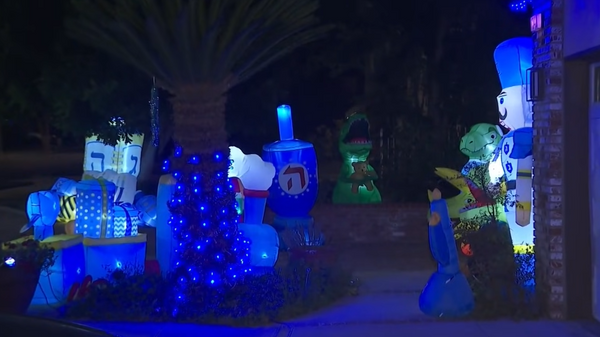
When George A. Romero and John Russo co-wrote Night of the Living Dead in 1968, they could not have foreseen that their little independent horror movie would change the course of the genre forever, nor that the movie’s groundbreaking success would inevitably lead to a demand for sequels. But instead of collaborating, Romero and Russo would venture off and each create their own variation on the template they had established.
Russo and Romero agreed to give each other the rights to use the words “living dead” and “dead” respectively for their films, with Russo not allowed to promote his film as a Night sequel. While Romero’s Dawn of the Dead (1979) and Day of the Dead (1985) were equal parts horrific, satirical, and bitterly cynical, Russo and friends developed The Return of the Living Dead, which was at first a straight successor to Night, but morphed — with the help of writer-director Dan O’Bannon (Alien) — into a “punk rock” take and one of the first “zombie comedies.”
1985's The Return of the Living Dead was also one of the first meta horror movies: its story was said to be the "real" basis for Night of the Living Dead. The film stars Clu Gulager, James Karen, and Thom Mathews as three hapless employees at a medical warehouse who accidentally release a toxic gas called Trioxin from a military drum. This gas, allegedly the source of the zombie outbreak fictionalized in Night, resurrects a cemetery full of reanimated corpses, who are eager to devour human brains. Also involved are a gaggle of local punk rockers whose late-night partying in the boneyard leads smack into a collision with the living dead.
Now reissued for its 40th anniversary in 4K Ultra HD, The Return of the Living Dead remains a seminal work in the history of zombie movies — as well as a genuinely zany comedy.
How Was The Return of the Living Dead Received Upon Release?

Initially positioned as a limited release, The Return of the Living Dead did so well in test screenings that Orion Pictures gave it a wide theatrical rollout. The film did okay as a result, earning around $14 million (in 1985 dollars) against its relatively low $4 million price tag (it also handily outsold Romero’s third entry, Day of the Dead, much to the latter’s chagrin). Return scored well with critics too, with the film now holding a 91% “fresh” rating on Rotten Tomatoes (based on 44 reviews) and 80% approval from audiences.
As with most movies of its type, it’s retained a cult following over the years, and often ranks high in lists of the best zombie movies. It was regarded at the time of its release as a lively, self-aware, light-hearted new twist on the zombie genre, a reputation which has stayed with the film through the ensuing decades.
Why Is The Return of the Living Dead Important to See Now?

The Return of the Living Dead was the first all-out zombie movie spoof, playing the tropes of films such as Night and knockoffs like Lucio Fulci’s Zombie for laughs instead of scares. As Romero himself later said, “It’s a sendup…that damages your ability to do it straight.” He was wrong on that count, as his own later films like Land of the Dead and other properties such as 28 Days Later and The Walking Dead proved. But Return did permit filmmakers to poke fun at the genre in creative fashion, paving the way for well-received (and often entertaining) films like Shaun of the Dead, Zombieland, Warm Bodies, and the exquisitely titled Zombie Strippers.
Return also introduced elements to the mythology that remain canon to this day, including the concept of zombies hungering for human brains (as opposed to any old flesh). It also dismissed other rules, such as the idea that zombies can only be stopped by being shot in the head (only cremation works in the film), that they move slowly, and that they are unintelligent; O’Bannon’s living dead actually talk, although most of what they said is “More brains!” The movie spawned its own franchise, although returns (no pun intended) diminished quickly over the course of four more entries (a fifth sequel is supposedly due out in late 2025).
What New Features and Upgrades Does the Return of the Living Dead Blu-ray Have?

The latest iteration of The Return of the Living Dead on home video comes in a flashy new Steelbook from Scream Factory, featuring excellent, EC Comics-inspired artwork and containing a fresh new 4K Ultra HD transfer of the film and accompanying DTS-HD 5.1 audio mix. This should be a nice jump in quality from Scream Factory’s last (and not too shabby) edition of the film, issued in 2022, which was taken from a then-new 2K scan.
All the bonus features from that already loaded 2022 release have been ported over to this one, including four commentaries, the “definitive” documentary on the movie (titled More Brains: A Return to the Living Dead), a final interview with Dan O’Bannon (who passed away in 2009), an interview with John Russo, and lots of additional featurettes on various aspects of the film ranging from the makeup FX to the music to the locations. The lack of new features may disappoint some fans, so unless you really need that 4K remaster, there’s nothing here you won’t have already if you own the 2022 release.







